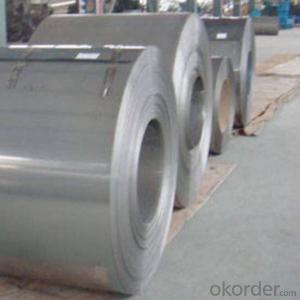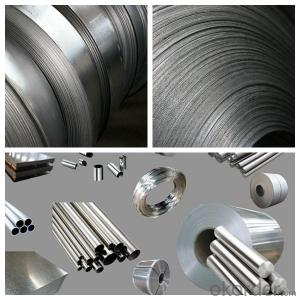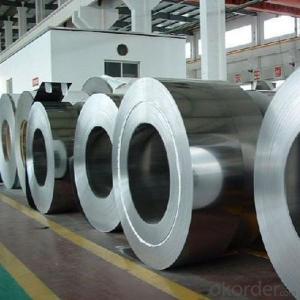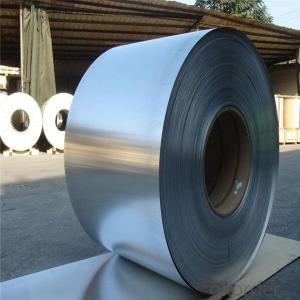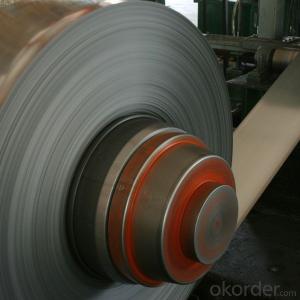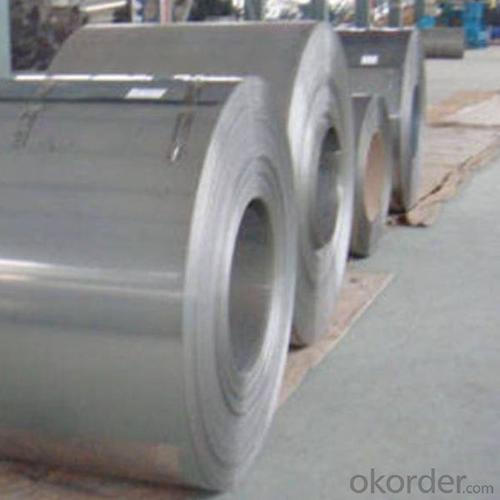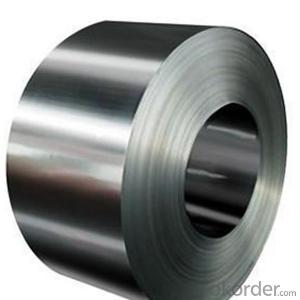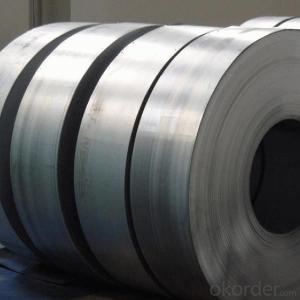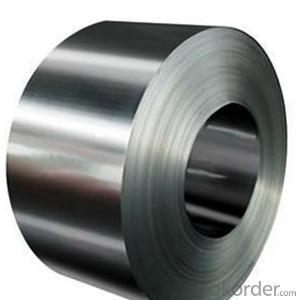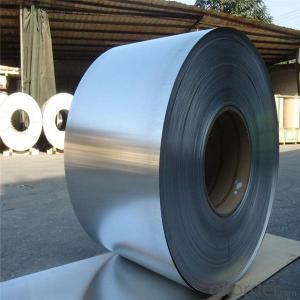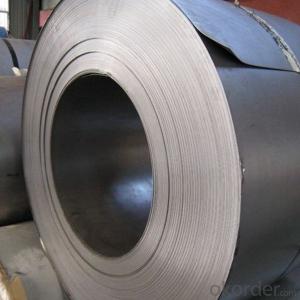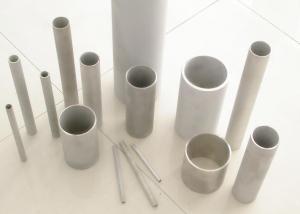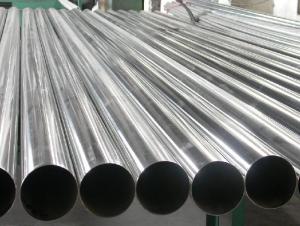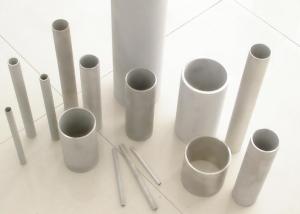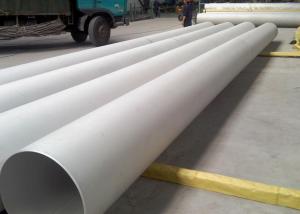Hot Rolled Stainless Steel 304 NO.1 Finish From China Supplier
- Loading Port:
- China main port
- Payment Terms:
- TT OR LC
- Min Order Qty:
- 22 m.t.
- Supply Capability:
- 1000 m.t./month
OKorder Service Pledge
OKorder Financial Service
You Might Also Like
Specification
Products Description for Stainless Steel Coils/Sheets:
Product | stainless steel coils/plates/sheets | ||
Discharge Port | Any Port, China | ||
Size | Coils | Cold Rolled: | Thickness0.3-8mm,Width:280-2100mm |
Hot Rolled : | Thickness3-14mm,Width:650-2100mm | ||
Plates | Thickness2-80mm,Width:1500-3000mm | ||
Coil Weight | About 20 Tons | ||
Grade | 201,202,304/304L/304H,316/316L/316H,321/H,310S,409/L,430 etc. | ||
Technique | Hot Rolled/Cold Rolled | ||
Finish | 2B, BA, 2D, No1, No2, No4,NO.8,SB etc | ||
Edge | Mill Edge / Slitting Edge | ||
Package | In bundles, or as customer's requirement | ||
Place of Origin | Made in China | ||
MOQ | 20 Tons | ||
Specifications for Stainless Steel Coils/Sheets:
Type | 200 series,300 series,400 series |
Thickness | 1.8-8.0mm |
Widthness | 1000/1219/1500mm |
Technique | Hot Rolled/Cold Rolled |
Coil Weight | About 20 Tons |
Finish | NO.1/NO.2B |
Place of Origin | Made in China |
MOQ | 18 ton |
Color | Black,Mirror Finished |
Standard | ASTM, JIS, GB, BS, DIN etc |
Exporting countries | Peru,India,Pakistan,Singpore,Vietnam,South Korea,Malaysia etc. |
After-sales service | Factory Inspection |
Certifications | ISO,SGS |
Packaging | Standard export packing or following customer's demand |
Features of Stainless Steel Coils
(1)Good ductility
(2)Good corrosion resistance
(3)Excellent abrasion resistance and fatigue strength
(4)Good weldability
(5)Oxidation resistant performance
(6)Excellent in high temperature
Payment&Delivery for Stainless Steel Coils/Sheets:
Payment Terms | 100% LC at sight,or 30%TT in advance, balance against B/L copy |
Delivery Time | With 30-40 days after deposit |
Price Terms | Ex-Work, FOB, CNF, CFR, CIF,etc |
Application of Stainless Steel Coils
(1)Boiler heat exchanger,
(2)Chemical industries,
(3)Hardware fields,
(4)Construction material,
(5)Kitchen utensils,
(6)Building construction,
(7)Medical equipment,
(8)Chemical tank,
(9)Pipe etc

- Q: What is the coefficient of expansion of stainless steel sheets?
- The coefficient of expansion of stainless steel sheets typically ranges from 10.5 to 17.3 x 10^-6 per degree Celsius.
- Q: What's the difference between the 304 stainless steel plate and the 310S stainless steel plate?
- The common marking methods in the field are 0Cr18Ni9, SUS304, in which 06Cr19Ni10 generally means GB standard production, S30408 generally represents ASTM standard production, and SUS 304 represents daily standard production.
- Q: How do I prevent crevice corrosion on stainless steel sheets?
- To prevent crevice corrosion on stainless steel sheets, there are several steps you can take: 1. Choose the right stainless steel grade: Ensure that you are using a stainless steel grade that is resistant to crevice corrosion. Grades such as 316 and 317L are known to have excellent resistance to this type of corrosion. 2. Proper design: When designing structures or equipment, avoid creating crevices or areas where water or other corrosive substances can accumulate and remain stagnant. Minimize gaps, sharp edges, and overlapping surfaces to reduce the risk of crevice corrosion. 3. Regular cleaning and maintenance: Clean the stainless steel sheets regularly to remove any contaminants, deposits, or corrosive substances that may have accumulated. Use mild detergents and non-abrasive cleaning agents to avoid damaging the protective oxide layer on the stainless steel surface. 4. Avoid using chloride-rich environments: Chloride ions are known to accelerate crevice corrosion on stainless steel. Avoid exposing the sheets to environments with high chloride concentrations, such as saltwater, chlorinated solutions, and certain industrial chemicals. 5. Apply protective coatings: Consider applying protective coatings or finishes to the stainless steel sheets. These coatings act as a barrier, preventing direct contact between the stainless steel surface and corrosive substances. However, it is important to choose coatings that are compatible with stainless steel and do not compromise its corrosion resistance. 6. Regular inspection: Inspect the stainless steel sheets regularly for signs of corrosion or damage. Look for any discoloration, pitting, or cracking, especially in areas prone to crevice corrosion. Promptly address any issues to prevent further corrosion and potential structural damage. Remember, prevention is key when it comes to crevice corrosion. By selecting the appropriate stainless steel grade, designing structures to minimize crevices, maintaining cleanliness, avoiding harsh environments, applying protective coatings, and regularly inspecting for damage, you can significantly reduce the likelihood of crevice corrosion on stainless steel sheets.
- Q: Can stainless steel sheets be used for elevator mirror panels?
- Yes, stainless steel sheets can be used for elevator mirror panels. Stainless steel is a durable and corrosion-resistant material that is commonly used in elevator design and construction. It is also highly reflective, making it an ideal choice for mirror panels. Stainless steel mirror panels not only provide a sleek and modern aesthetic to elevators but also offer excellent durability and ease of maintenance. Additionally, stainless steel can withstand the wear and tear of constant use, making it a reliable and long-lasting material for elevator mirror panels.
- Q: Can stainless steel sheets be used for outdoor railings?
- Yes, stainless steel sheets can be used for outdoor railings. Stainless steel is highly resistant to corrosion, making it an ideal material for outdoor applications. It can withstand exposure to various weather conditions, including rain, humidity, and sunlight, without rusting or deteriorating. Additionally, stainless steel's strength and durability ensure that it can withstand the pressure and weight typically exerted on railings, making it a reliable choice for outdoor installations.
- Q: What are the different types of brushed finishes available for stainless steel sheets?
- There are several types of brushed finishes available for stainless steel sheets, including satin, mirror, hairline, and bead blasted finishes.
- Q: What is the Young's modulus of stainless steel sheets?
- The Young's modulus of stainless steel sheets is subject to variation based on the particular grade and composition of the stainless steel. In general, stainless steel possesses a substantial Young's modulus, typically falling within the range of 190 to 220 gigapascals (GPa). Consequently, stainless steel sheets exhibit considerable rigidity and resilience against deformation when subjected to external stress. Nevertheless, it is crucial to acknowledge that the precise Young's modulus can marginally differ due to factors such as temperature, manufacturing techniques, and the specific alloy employed in the stainless steel sheets.
- Q: Can stainless steel sheets be used in medical equipment?
- Yes, stainless steel sheets can be used in medical equipment. Stainless steel is a popular choice for medical devices and equipment due to its excellent properties such as corrosion resistance, durability, and ease of cleaning. It is commonly used in surgical instruments, implants, hospital equipment, and laboratory tools. Stainless steel sheets are often used in the fabrication of medical equipment due to their versatility and ability to be molded into various shapes and sizes. Additionally, stainless steel is highly biocompatible, meaning it does not react with bodily tissues and is safe for use in medical applications. Overall, stainless steel sheets are a reliable and widely accepted material for medical equipment due to their hygienic properties and long-lasting performance.
- Q: What are the benefits of using perforated stainless steel sheets?
- Using perforated stainless steel sheets in various applications offers several advantages. Firstly, these sheets provide excellent strength and durability due to the high tensile strength and corrosion resistance of stainless steel. This makes them a reliable option for applications that require materials with long-lasting properties. Additionally, the structural integrity of the sheets remains uncompromised even with the presence of perforations, ensuring their ability to withstand heavy loads and harsh environments. Secondly, these sheets offer exceptional ventilation and airflow. The perforations allow air and gases to pass through, making them suitable for applications that necessitate proper ventilation, such as HVAC systems, industrial machinery, and automotive components. This ventilation capability prevents the accumulation of heat and moisture, which is crucial for maintaining the efficiency and safety of various equipment. Furthermore, the design and aesthetic versatility of perforated stainless steel sheets are noteworthy. The ability to customize the size, shape, and pattern of the perforations enables the creation of unique and visually appealing designs. Consequently, they are suitable for architectural applications, interior design elements, and decorative purposes. The wide range of available perforation patterns also allows for the control of light transmission, resulting in interesting lighting effects or privacy screens. Moreover, these sheets possess excellent filtration capabilities. The perforations can be designed to filter out specific particles or substances, making them ideal for applications in the food and beverage industry, pharmaceuticals, and water treatment systems. This ensures the cleanliness and purity of the materials or fluids passing through the sheets, thereby enhancing overall product quality and safety. Lastly, perforated stainless steel sheets are easy to clean and maintain. Stainless steel's non-porous nature makes it resistant to stains, dirt, and bacteria. This, coupled with the presence of perforations, facilitates easy cleaning and disinfection, making them suitable for applications that require high levels of hygiene, such as commercial kitchens, medical facilities, and laboratories. In conclusion, the utilization of perforated stainless steel sheets offers numerous benefits, including strength and durability, ventilation capabilities, design versatility, filtration capabilities, and ease of cleaning and maintenance. These qualities make them a preferred choice in a wide range of industries and applications.
- Q: How do you prevent crevice corrosion on stainless steel sheets?
- To minimize the occurrence of crevice corrosion on stainless steel sheets, there are several steps that can be taken: 1. Maintaining cleanliness and performing regular maintenance: It is crucial to keep the stainless steel sheets clean and free from any contaminants. Regular cleaning using mild detergent and water, followed by thorough rinsing and drying, helps eliminate potential corrosive agents. 2. Avoiding the accumulation of debris or moisture: Ensuring that there are no crevices or gaps where debris or moisture can accumulate is essential. Regular inspection and maintenance can help identify and rectify any such areas. Additionally, maintaining effective drainage systems and preventing water pooling can help prevent moisture accumulation, which contributes to crevice corrosion. 3. Applying protective coatings: The application of protective coatings on the stainless steel sheets provides an additional barrier against crevice corrosion. Various types of coatings, such as paints, epoxy coatings, or specialized corrosion-resistant coatings designed for stainless steel, are available. 4. Using suitable gaskets and sealants: When fastening or joining stainless steel sheets, it is important to utilize compatible gaskets and sealants. These components should be corrosion-resistant and act as barriers against moisture and contaminants. Silicone-based sealants or gaskets made from PTFE (polytetrafluoroethylene) are commonly employed for this purpose. 5. Preventing galvanic corrosion: Galvanic corrosion can arise when dissimilar metals come into contact with each other in the presence of an electrolyte, leading to corrosion of the less noble metal. To prevent this, it is crucial to avoid using dissimilar metals in close proximity to stainless steel sheets. When necessary, insulating materials or coatings can be used to separate them. 6. Conducting regular inspections and maintenance: Regularly inspecting the stainless steel sheets for any indications of corrosion and promptly addressing them is crucial in preventing crevice corrosion. This includes checking for signs of pitting, discoloration, or degradation of the protective coatings. Any identified issues should be promptly resolved to prevent further corrosion. By adhering to these preventive measures, crevice corrosion on stainless steel sheets can be effectively minimized, thus ensuring their longevity and preserving their aesthetic appeal.
Send your message to us
Hot Rolled Stainless Steel 304 NO.1 Finish From China Supplier
- Loading Port:
- China main port
- Payment Terms:
- TT OR LC
- Min Order Qty:
- 22 m.t.
- Supply Capability:
- 1000 m.t./month
OKorder Service Pledge
OKorder Financial Service
Similar products
Hot products
Hot Searches
Related keywords
